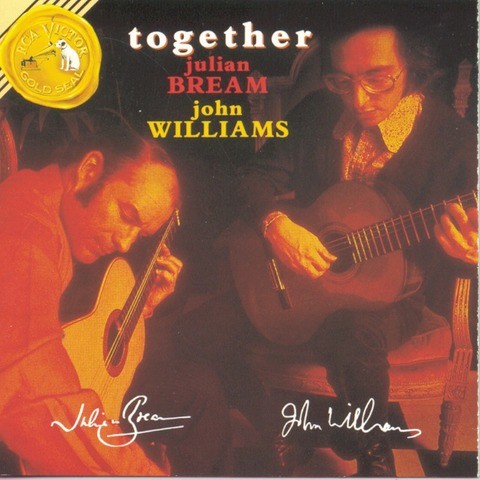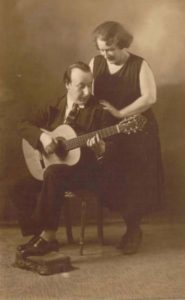

He published his "Nouvelles Découvertes sur la guitare" in Paris in 1705 as well as a treaty on accompaniment which includes the first fugues for guitar ever written. In 1703, François Campion was given the title of professor of theorbo and guitar at the Royal Academy of Paris by king Louis XIV. Robert de Visée, successor of Francesco Corbetta as musician at the court of the King of France, had his "Livre de guittarre dédié au Roy" printed in Paris (1682). In France, in 1670, Francesco Corbetta printed in Paris "la guitarre Royalle". In 1674, the Spaniard Gaspar Sanz published his "Instruccion de musica sobre la guitarra española". This innovation, together with the introduction of the flat back from about 1650, heralded the birth of the “Spanish guitar".īaroque Music for classical guitar (1670 to 1750) Round about 1570, the sonority and register of the guitar were increased with the addition of a fifth string. Between 15 they published 5 books of guitar tablatures. In 1549 Adrian Le Roy, together with his cousin, Robert Ballard, founded an important publishing house which was given the royal seal of approval. In the third book are published for the first time small pieces written for the four string guitar.ĭuring the sixteenth century, a score of books for guitar were published, mainly in Paris. In 1546 “Tres Libros de Musica para Vihuela" by Alonso Mudarra appeared in Seville. Two years later, in 1538, Luys de Narváez published in Valladolid "Los seys libros del Delphin de musica" which introduced into Spain the idea of Variations on a Theme. In 1536, that is to say a hundred years after the appearance of printing in Europe, Don Luys Milán, a gentleman at the court of the king of Portugal and of the Islands, published in Valencia, under the title of El Maestro, a collection of music which contains instrumental pieces for vihuela, as well as songs with vihuela accompaniment.

This new process replaced the old practice of handwritten scores and, for the first time, the very rich lute repertory could be widely disseminated. The pages were printed in three stages: first, the staves, then the notes and finally the text and the page numbers. In 1501, in Venice, the printer Ottavio Petrucci was the first to use typography in the production of music. This music is cream for your ears as well as your soul.įor more information: of the Renaissance for classical guitar Treat yourself to some beautiful, elusive classical guitar music by the enormously talented Mattias Jacobsson-you won’t regret it.

Mattias Jacobsson is still freelancing, making New York one of his bases. The album, he says, “seeks to paint a portrait of both an era in the Catalan region in the early 20th century, but also of myself and a crucial part of my musical upbringing.” Playing Tárrega's Chopin transcriptions on the guitar is certainly a challenge, but one I found showing Chopin in an interesting light: a more intimate Chopin, something I found often being a natural side of his music.” When I heard them side by side, I understood Tárrega's music much better and understood where a big part of his inspiration came from. He also made transcriptions of Chopin's piano music. “That inspiration caused him, a Spaniard, to write preludes, mazurkas (a regional Polish dance) and although not called nocturnes, pieces that function like them. “What struck me one day was just how much Tárrega was influenced by Chopin,” he explains. Jacobsson adds that it was through Tárrega that he discovered Chopin.

But Tárrega's music has also reached a large general public recently through Nokia's cell phone ring-tone ‘Grand Waltz,’ a quote from that piece by Tárrega.” "The pieces I chose to record are ones that are very close to my heart, and essential to who I am as a guitarist: the music of Tárrega, which has almost become one with the instrument. Since that concert, I have kept an eye (and ear) on Jacobsson and I am thrilled to report that his debut album, “Invocación,” is out and contains (apart from “Recuerdos de la Alhambra”) compositions like “El Testament d’Amelia,” a Catalan traditional arrangement by Miguel Llobet y Soles, Chopin’s “Nocturne in E Op.9 No.2” and “Trois Morceaux Espagnlos” by Emilio Pujol Vilarrubí. The most beautiful piece was the haunting “Recuerdos de la Alhambra” (Memories of the Alhambra) by Spanish composer and guitarist Francisco Tárrega. His concert contained mostly Spanish and South American music, but also a prelude by Bach, originally composed for violin. At the time, Jacobsson had recently concluded his studies at the prestigious Juilliard School of Music and was freelancing as a classical guitarist. I was heavily pregnant then, and remember very vividly how moved I was by his playing. I first heard classical guitarist Mattias Jacobsson play at the Swedish Church in New York City sometime in the fall of 2007.


 0 kommentar(er)
0 kommentar(er)
